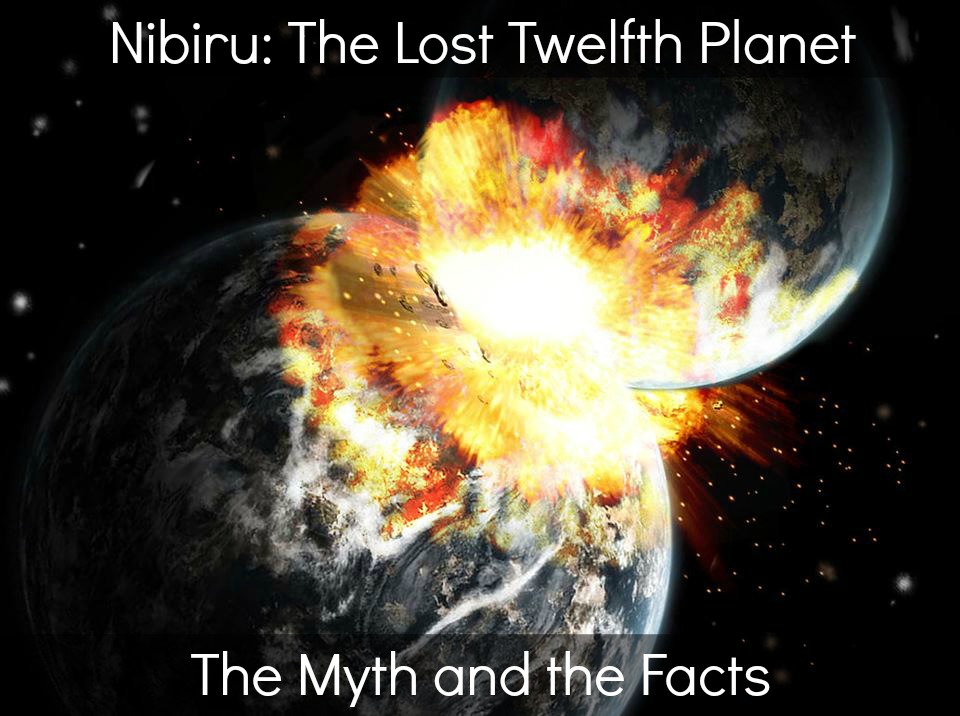

Nibiru was, by far, one of the central methods from which Earth was “predicted” to meet its untimely demise in 2012, at least according to how many people understood the supposed Mayan doomsday predictions. What is the myth supporting the existence of this planet and is there any real world evidence to back the tale?
Hypothetically, Nibiru is a planet with a retrograde orbit (meaning it orbits in the opposite direction as the other planets in the solar system) and an orbital period of about 3,600 years. The planet itself is supposedly inhabited by an alien race known as the Anunnaki. These aliens genetically engineered humans as a slave race to mine Earth’s precious metals (namely gold) about 450,000 years ago.
Historically speaking, Nibiru first makes an appearance in 1976 in the writings of Zecharia Sitchin. He wrote a book called “The Twelfth Planet” which argues that the Sumerian’s had advanced knowledge of our solar system and knew of twelve planets. Interestingly enough, the writings and arguments Stichin proposes are derived from his self-taught knowledge and is widely based off his own interpretations of Sumerian cuneiform thus ignoring all traditionally held translations. Most of the time, Stitchin simply ignored any translation that didn’t agree with his own interpretations.
Stitchin was also really good at using bad science. You can find an extensive debunking of the Nibiru Myth written by NASA aerospace engineer Rob Hafernik. I’ll hit some of the highlights, one of my favorites being the 12th planet’s impossible orbit.

See, using Kepler’s Laws of Planetary Motion, we can actually learn a lot about Nibiru based on the only two bits of information we have about it – 1) Nibiru has an orbital period of 3,600 years and 2) Nibiru must pass within 1 AU of the Sun (because, if it doesn’t, it can’t hit Earth). After we plug in the numbers and do a little math, we can determine that Nibiru must have an aphelion (the point in the orbit which is furthest from the Sun) of 469 AU – for the record, that is 469 times the Earth-Sun distance. As comparison, Pluto has an aphelion of 49 AU (Pluto’s orbit is also considered “highly elliptical”). Using the wonders of modern technology, we are able to use simulations to produce a stable orbit for Nibiru. These simulations don’t account for the other planets in the solar system. In addition, the Sun’s gravity is very weak at 469 AU (that is about 2.7 light days), it would be easy for a passing object or another planet in our solar system to destabilize Nibiru’s orbit and have it thrown into interstellar space.
In case fate was kind to Nibiru and it really is out there, if it were close enough to impact Earth anytime soon, it would be visible to the naked eye (in fact, it would be visible years before the impact date). On top of that, Stichen didn’t even predict Nibiru would swing by in 2012. In fact, his prediction says Nibiru will come through our neighborhood in 2900. Something he conveniently forgot about when he started making money from the 2012ers.
In the end, Nibiru seem like an interesting myth. Whereas such an object could exist under perfect conditions, the chance of Nibiru looming in the outer solar system with our name on it is extremely remote. Even though Nibiru seems like a fantasy, there could be other planets orbiting on the outskirts of our solar system (but, they probably won’t come anywhere close to Earth).